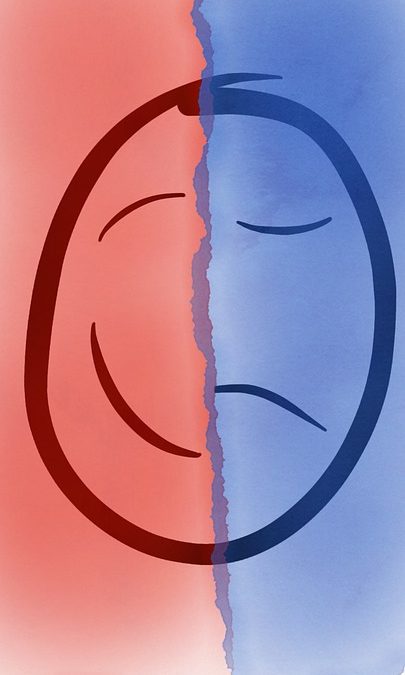Table of Contents
Bipolar disorder is a mental health condition affecting nearly 2 million American adults. This condition is characterized by extreme mood swings, shifting between episodes of extreme highs (manic) and episodes of extreme lows (depressive).
Three Bipolar Disorder Types
There are three main types of bipolar disorder: bipolar I, bipolar II, and cyclothymia
- Bipolar I is characterized by the manifestation of at least one manic episode, typically experienced in-between hypomanic and depressive episodes.
- Bipolar II is characterized by experiencing a depressive episode that can last for at least 2 weeks, with a hypomanic episode lasting at least 4 days. Bipolar II occurs more in women than in men.
- Cyclothymia cycles through episodes of hypomania and depression, with symptoms less severe than in bipolar I and bipolar II.
Even now, the exact cause of bipolar disorder is unknown. However, there are known factors that increase risks of developing the disorder, the most prevalent of which is hereditary. Indeed, researchers have found a possible link between bipolar disorder and genetics.
Hereditary and Bipolar Disorder
If your family has a known history of having bipolar disorder, then there is increased risk of you developing the same. The closer that family member’s relationship to you is, the higher the risk. For instance, if your grandparent has bipolar disorder, you have a higher chance of developing the condition than someone whose great-grandparent has it.
However, that doesn’t mean that you would definitely develop the disorder; the genetic link merely increases the risks. In some cases, even if the parent has bipolar disorder, the children don’t necessarily develop the condition. There are also cases where there’s no history at all of bipolar disorder developing in anyone in the family only for it to develop in the latest generation. To be sure, however, you may consult with a professional to conduct a screening for bipolar disorder.
Other risk factors and triggers for bipolar disorder
Aside genetics and hereditary, there are other risk factors for developing bipolar disorder.
Brain structure
There may be small differences in brain size and activity in people with bipolar disorder. Irregularities in brain size, structure, or function can increase risk of developing bipolar disorder.
Environmental factors
External factors may have adverse effects on your psyche and may lead to the development of bipolar disorder. For instance, undergoing extreme stress, going through a traumatic experience, or having a severe physical illness may contribute to the development of the condition.
Other risk factors for bipolar disorder includes heavy drug use or alcohol consumption as well as unhealthy lifestyle patterns such as constant lack of sleep.
Testing for bipolar disorder
Bipolar disorder isn’t evaluated with just one examination. Your doctor will have to use various tests and tools for a comprehensive evaluation of your condition.
Physical exam
A full physical exam may be ordered by your doctor to ensure an extensive assessment. This may include blood tests and asking for your family’s medical history. A physical exam is the easiest way of ruling out other causes of your symptoms.
Mental health evaluation
A psychologist or psychiatrist will conduct a full psych evaluation to assess your mental health. During this evaluation, they will look for hereditary signs of bipolar disorder or other mental health conditions.
Mood journal
The doctor may ask you to keep track of your hereditary behavioural changes or mood shifts by keeping a journal. A journal is a simple yet effective tool for charting how your emotions change in a certain period of time, as well as how long those emotions last.
Treatment Options
Though there is no known cure yet for bipolar disorder, there are various treatment options available to help manage its symptoms effectively. Management strategies for bipolar disorder include, primarily, medications, hereditary, various therapies, as well as making healthy lifestyle changes.
The most common medications for bipolar disorder are mood stabilizers, such as lithium. , As people with bipolar disorder are observed to have higher levels of sodium in the cells, lithium helps lower the sodium levels.
There are various therapies that can be used as well, including cognitive behavior therapy. This therapy helps you talk through your condition, allowing you to work through your emotions and thus understand your own thinking patterns. Understanding how you think and learning how to recognize the onset of your symptoms can help you create a positive coping hereditary strategy.
Another type of therapy is psychoeducation or counselling for you and your loved ones. Psychoeducation aims to help you and other understand your condition better, thus allowing you to help each other in managing it more effectively as a harmonious unit.
See a Doctor
If you think you or a loved one has bipolar disorder, it’s best to consult with a professional immediately. Diagnosis is the first step to coming up with a treatment plan that can help effectively manage the condition, which in turn could provide a way for you to live a fuller, satisfying life.






 I love to write medical education books. My books are written for everyone in an easy to read and understandable style.
I love to write medical education books. My books are written for everyone in an easy to read and understandable style.